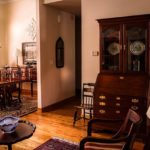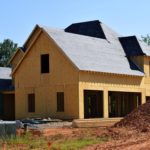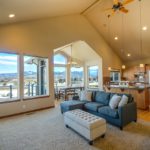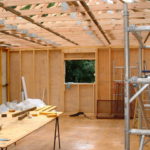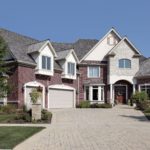Sorry, folks, the carpet versus wood flooring was only the beginning of your decision-making process, not the end of it. Although settling that debate provides a clear direction for moving forward, there are still many questions to answer before you purchase.
Need a few tips on how to pick the wood floor of your dreams? Keep these five factors in mind as you weigh your options.
1. Location
If you’re picking out wood flooring, chances are you already have a room in mind. However, you may not realize the room in question will play a big role in determining your flooring.
Solid wood has many perks. It’s a classic and beautiful upgrade, hypoallergenic and capable of lasting for decades. Unfortunately, it doesn’t pair well with water. That means if you’re renovating a bathroom or basement, solid wood is not a good choice. The moisture found in underground rooms and water closets can damage or warp solid hardwood floors.
If you want the look of hardwood in a high-moisture space, your best bet is engineered wood. A top veneer provides you with the aesthetic you desire, but the plywood core makes it more durable in moist environments. (Durable, but not impervious, so you still want to wipe up spills as soon as possible.)
Engineered wood can also be laid over radiant floor heating and concrete subfloors, whereas solid wood works best over a plywood subfloor.
2. Installation

Engineered hardwood offers easy-to-install options like a tongue-and-groove option. Simply match the tongue to the groove and snap the planks in place. Of course, this still takes some skill with a saw and the patience to do it right. The upside is that you can float this flooring over existing material — tile, plywood, concrete — which makes for far less prep work.
Solid wood needs a plywood subfloor, which may mean more work if you have particle board or damaged subfloor. Preparing the subfloor for hardwood will either mean more money to the pros or more DIY hours for the homeowner.
3. Cost
Cost is often the biggest determining factor in any renovation. As you can see from above, it’s important to factor installation into your budget. Just don’t make the mistake of assuming engineered wood will automatically be cheaper.
Many oak options are close in price to engineered wood. And although the plywood core cuts costs, an exotic veneer choice can drive up the price of engineered wood.
Don’t forget to factor in longevity. Solid wood has a proven track record, when properly maintained. It can withstand numerous sandings and refinishings, while engineered wood’s thin veneer means your repair attempts are limited.
4. Style
Between engineered and solid options, there is a wood floor to match every style from rustic to modern, historically accurate to eclectic, farmhouse to shabby chic.
Several factors contribute to a wood’s style. You’ll want to consider board width; thin strips can make a space seem larger, whereas wide planks can evoke a cozy, rustic feel. Color can come from natural variations in species or from a bevy of stain options available at your local hardware store. Finally, you can select finishes that range between the rough and weathered finish of reclaimed wood or the polished lacquer of engineered planks.
5. Lifestyle
Do you have pets? Children? Is it a high-traffic area? Are you clumsy? Before selecting your flooring, it’s good to give some consideration to your lifestyle.
Solid wood is rated on a Janka scale. Essentially, a BB is driven into the wood and the rating reflects the wood’s hardness and durability. While you likely want to avoid the softest woods, like the poorly performing Douglas Fir, you don’t necessarily want to jump straight to the hardest options. Not only are they more difficult to work with, they also tend to be the most expensive.
Again, it’s important to remember solid wood can be sanded and refinished multiple times. A great middle-of-the-scale option like red oak offers decent durability for an equally decent price, and any damage (aside from flood or fire) can easily be sanded away.
If your options still feel too overwhelming, get an expert involved. They can help answer any of your lingering questions about design, durability, cost or installation.
AUTHOR BIO: Ali is a tea-sipping writer who focuses on healthy and sustainable living via her family blog Homey Improvements. She was born and raised in Alaska and dabbles in Pilates and is a princess for hire for kid’s parties.




